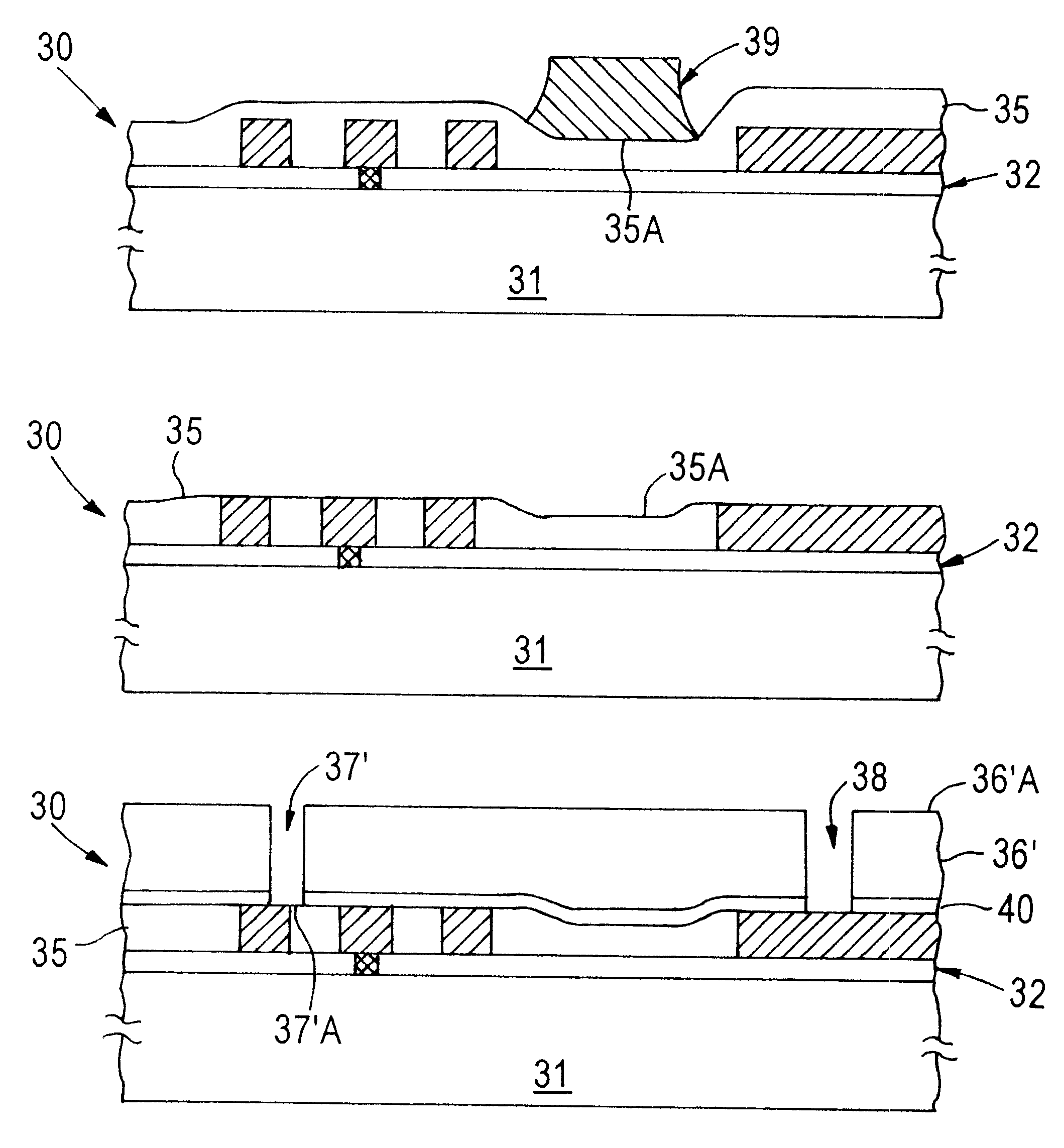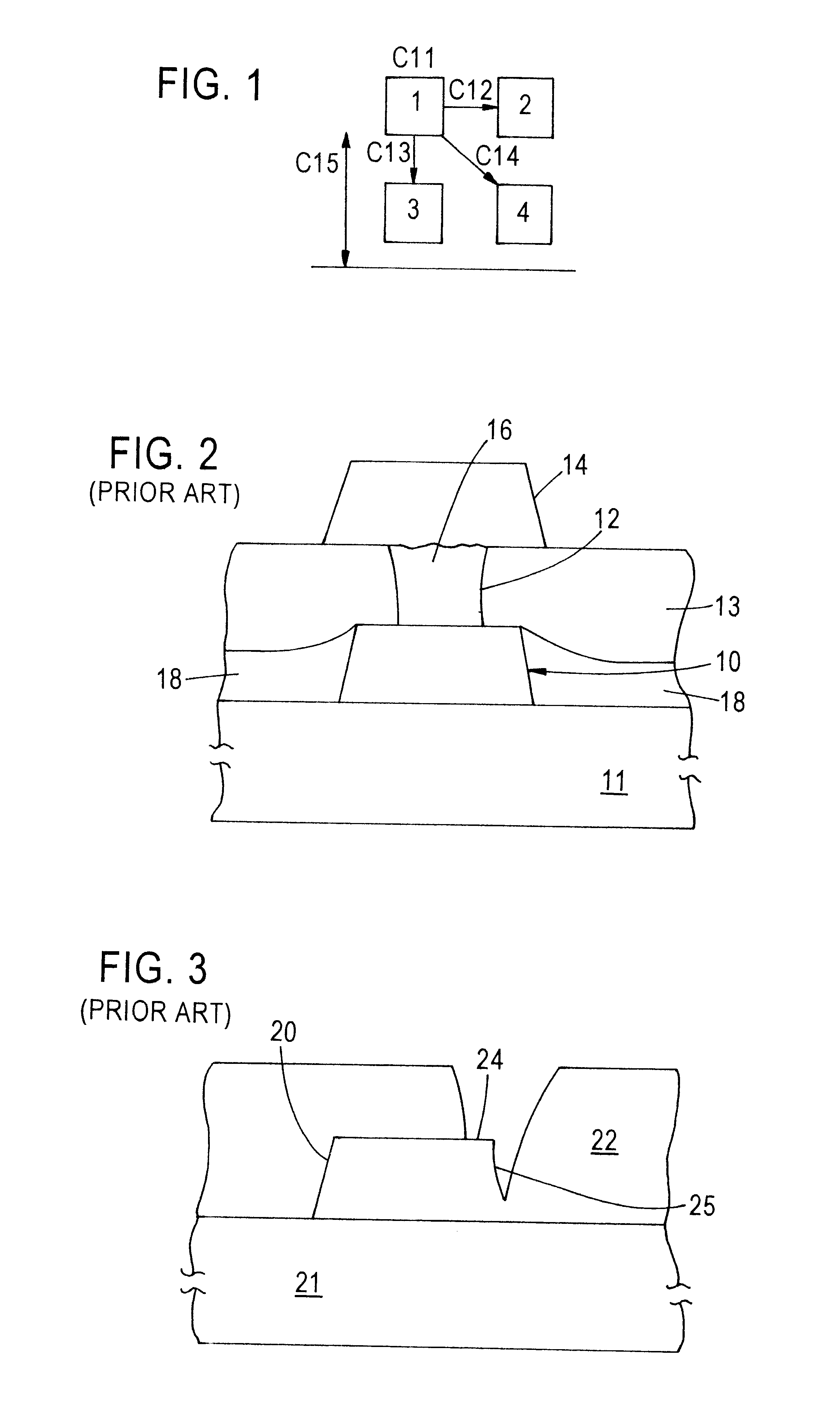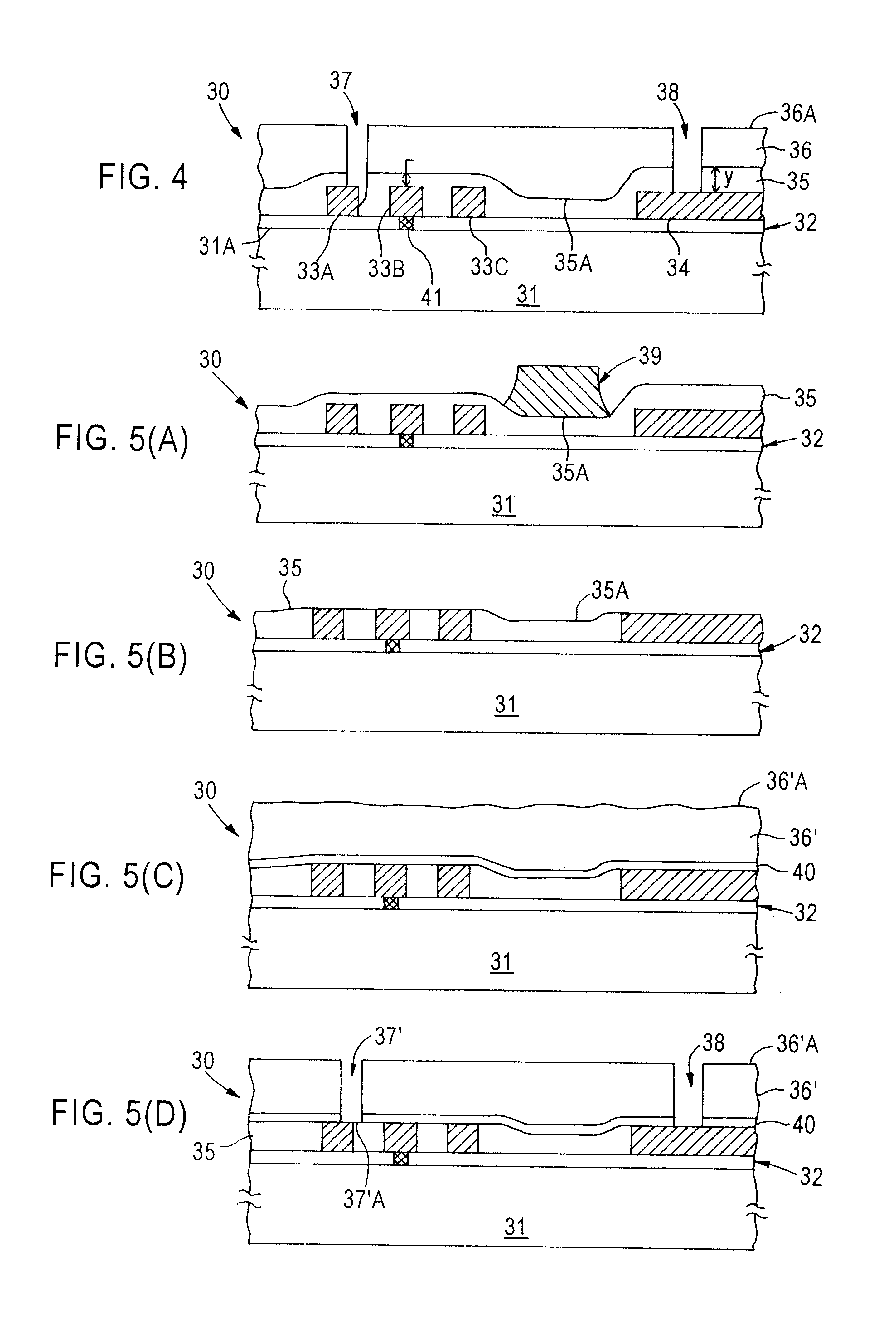Reverse mask and nitride layer deposition for reduction of vertical capacitance variation in multi-layer metallization systems
a multi-layer metallization and vertical capacitance variation technology, applied in the direction of basic electric elements, semiconductor/solid-state device manufacturing, electric apparatus, etc., can solve the problem of difficult to obtain high-density integration, difficult to reduce the vertical capacitance variation between overlying metallization levels, and difficulty in forming interlayer dielectric layers (ilds) with highly uniform thickness over the wafer substrate surface according to conventional practices. problem, to achieve the effect of improving multi-level
- Summary
- Abstract
- Description
- Claims
- Application Information
AI Technical Summary
Benefits of technology
Problems solved by technology
Method used
Image
Examples
Embodiment Construction
The present invention addresses and solves problems arising from manufacturing high-density integration, submicron-dimensioned, multi-metallization level semiconductor devices comprising in-laid "back-end" metallization patterns comprising a plurality of spaced-apart conductive features of varying dimensions and spacings, wherein, as part of the fabrication methodology, at least one via is formed in an interlayer dielectric layer, for electrically contacting at least one underlying electrically conductive feature formed on or within a dielectric layer formed on a surface of a semiconductor wafer substrate, the at least one conductive feature comprising an electrical contact area, interlevel metallization, and / or interconnection routing of at least one active device region or component formed on or within the semiconductor wafer substrate, and the at least one via comprising at least one borderless via.
Briefly stated, according to the present invention, problems of excessive variatio...
PUM
 Login to View More
Login to View More Abstract
Description
Claims
Application Information
 Login to View More
Login to View More - R&D
- Intellectual Property
- Life Sciences
- Materials
- Tech Scout
- Unparalleled Data Quality
- Higher Quality Content
- 60% Fewer Hallucinations
Browse by: Latest US Patents, China's latest patents, Technical Efficacy Thesaurus, Application Domain, Technology Topic, Popular Technical Reports.
© 2025 PatSnap. All rights reserved.Legal|Privacy policy|Modern Slavery Act Transparency Statement|Sitemap|About US| Contact US: help@patsnap.com



